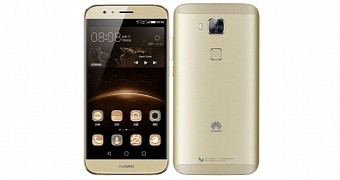Huawei was one of the leading presences at the IFA 2015 tradeshow in Berlin, where it unveiled a bunch of new products including the first handset to make use of Force Touch technology, the Mate S.
But that’s not the only phone Huawei came to Europe to unveil. The G8 was also made official as a handset promising to offer decent specs, a stylish chassis, and an affordable price tag.
However, the G8 is not an all-new appearance in the world of smartphones, as back in July, the Chinese company unveiled the device in China with a Snapdragon 615 on the inside and 2GB of RAM. Nevertheless, the device Huawei showed us yesterday has a little bit more RAM on board.
Anyway, it appears that the new and improved G8 will also make it to China in the near future, but will be made available under a different name, as a report from Asian website Mobile Dad seems to indicate.
The Chinese G8 has a different spec list
According to the information, the new G8 will be released in the country as the G7 Plus. The phone is expected to make a debut with a 5.5-inch 2.5D display with 1080p resolution (1920 x 1080 pixels). However, unlike the European G8 version, the G7 Plus will make use of a Snapdragon 616 processor instead, fitted with 3GB of RAM and 16GB of internal storage.
The Snapdragon 616 features four Cortex-A53 cores clocked at 1.7GHz plus four Cortex-A53 cores clocked at 1.2GHz. In contrast, the Snapdragon 615 comes equipped with the same 1.7GHz Cortex A-53 cores, while the remaining ones are clocked at 1.0GHz. So the new chipset should be a tad more powerful than that on the original model.
Huawei will also throw in a 13MP main camera plus a 5MP frontal shooter for selfies. The G7 Plus will be kept alive by a 3,000 mAh battery, so its life cycle should be pretty decent. We should also mention that the G7 Plus is a dual-SIM device that offers 4G connectivity and a fingerprint scanner.
Android 5.1 Lollipop is the default operating system on board, with Huawei’s EMUI (Emotion UI) 3.1 plastered on top.

 14 DAY TRIAL //
14 DAY TRIAL //